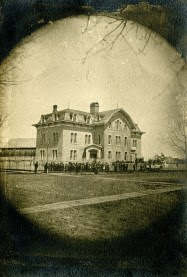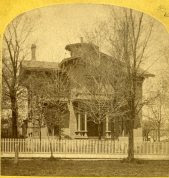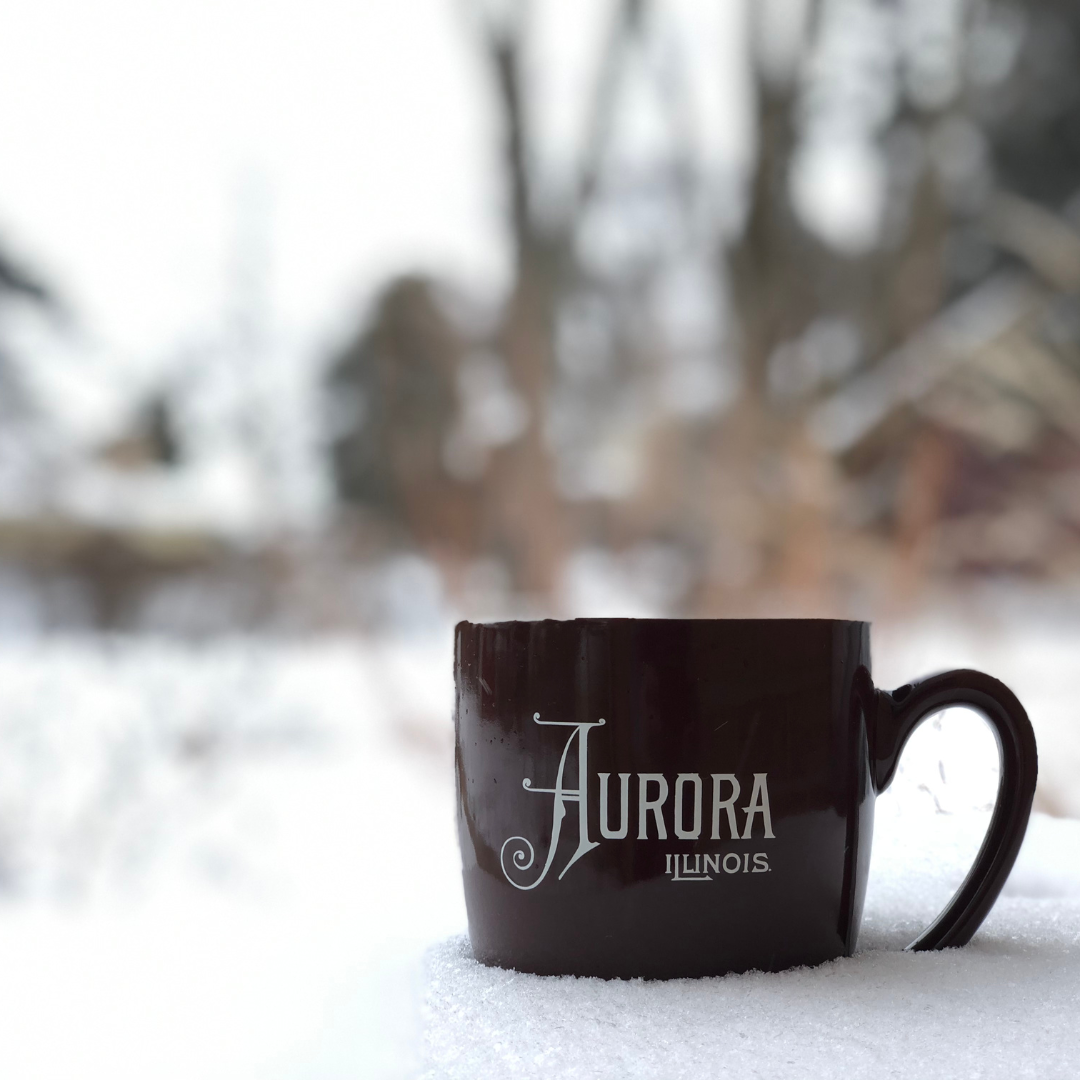Appearing in this week’s Kane County Connects newsletter.
Editor’s Note: This article is part of a weekly series on Kane County’s amazing history. Today’s article was written by Aurora Historical Society members Mike Fichtel, John Jaros and Mary Clark Ormond. All images are courtesy of the Aurora Historical Society.

Let us now speak of cows. Humble, gentle, useful cows. Big brown eyes and soft warm breath. A simple diet. A tendency to mostly stand around. Able to provide life-giving milk and meat and leather.
Surely no one would say an unkind word against the cow.
Except when they would. And in Aurora, they surely did in the mid-Victorian period.

But before getting into that, a word is necessary about post-Civil War urban life.
City residents, even in bustling towns like Aurora, often kept farm animals on their property. Saddle and carriage horses, cows, goats, chickens, ducks and geese, not to mention pets like dogs, cats and caged birds could be found at many homes.
The animals provided labor, transportation, food and companionship. It was perfectly normal to find these aspects of country life in the relatively crowded surrounds of the modern city. After all, this was a civilization close enough to nature to sleep three or four people to a bed, limit bathing to whatever a bucket of water from the well could do, and utilize privies — or in the night, slop basins — for personal needs.
And people were frugal. For many, there was no thought of patronizing a commercial enterprise for the milk, butter, cheese, eggs and even meat that sustained a household.
Many city homes had barns or sheds where domesticated animals were sheltered. In the case of smaller animals, there was little impact on neighbors or the neighborhood. Even a large animal like a horse was most likely to be kept on the owner’s property.
But when it came to cows, citizens would, on a daily basis in warm weather, turn them loose in the neighborhood to forage for fresh food, retrieving them at the end of the day for milking and to spend the night at home.

It was an economical way to feed the large beasts. In the city, there were plentiful swaths of grass between sidewalks and streets, stretches of greenery that, if not eaten by the cows, would just have to be mowed, anyway. And if the occasional cow showed some initiative in wandering into a garden or a front yard, well, what was there to say.
That’s cows for you.
But as peace descended over the land, citizens all over the country found they could turn their attention to aesthetic considerations.
The City Beautiful movement, no doubt fed by an awareness of the nation’s centennial which would be celebrated in 1876, blossomed. Magazines and newspapers began to earnestly entreat readers to consider their physical and psychological health and their obligations to their fellow citizens by introducing order, cleanliness and good design principles into their home landscapes.
Lists of trees, horticultural tips and advice about landscape design appeared everywhere. In particular, fences came in for criticism as being unlovely and detracting from the appeal of a neighborhood. The nation, and the American city, were coming of age with new standards of taste.
Thus it was that cows, with their bulky bodies and big hard feet, and the long, strong teeth characteristic of all grazing animals, came under the microscope of public opinion. An average-size cow weighs 1,600 pounds, produces a certain amount of waste material per day and is unmindful of its own actions. Which are qualities that put them in natural opposition to order, cleanliness and good design.
Where People Live in Harmony

Elements of the City Beautiful, let’s say the expansive front lawn of a school, or an elaborate, canna-crowned flower bed in front of a fine mansion, or even a newly-planted tree saplings intended to provide shade along the street, were at risk. Not to mention the difficulties involved when cows traversed deteriorating plank sidewalks or simply demolished fences meant to hold them back.
In Aurora, matters came to a head in 1876 after years of fruitless citizen complaints to the Common Council, the term used for the elected body serving under the mayor.
Since at least 1863, Aurora had had a well-established ordinance regarding free-roaming animals. It allowed for cows, horses, mules, swine, sheep, goats and oxen to run free between the hours of 5 a.m. and 8 p.m. from April 1 to Nov. 1.
Two pounds had been established by this ordinance, one on each side of the river, to which animals illegally running free could be driven by any citizen.
Each pound was run by a pound master and any owner who wanted to redeem his animals could do so by paying directly for the expenses of the impoundment plus a fee of 50 cents per head which went to the city. Unclaimed animals could be sold at public auction, with any proceeds left over after paying the costs and fees being returned to the owner.
Aurorans seemed ready in 1876, with the progressive Thomas Hill sitting in the mayor’s chair, for the next step in beautifying their city.
Civic conversation turned in earnest to a more restrictive approach to cows. However, early appeals for action by the Common Council were blocked by Alderman L.W. Gray, who persuaded his fellow council members that they would become unelectable if they took a position to shut up the *poor man’s cow* and additionally allowed all that grass growing along the street to go to waste. (Later developments would reveal that Alderman Gray was himself pasturing six cows in the streets and selling the milk.)
Eventually, Mr. K. A. Burnell called a meeting at his home on North Lake Street to formulate strategy. In short order, the group gave up on mere petitions for action by the council and decided to ask for a vote of the people.
There ensued hot debate throughout the town, with several influential citizens orating in favor of the poor man’s cow and the newspapers taking the opposite side. When the vote was held on May 6, 1876, 1,148 citizens declared themselves in favor of shutting up the cows, with just 641 against it.
An enthusiastic account in the History of Kane County, Ill. by R. Waite Joslyn and Frank W. Joslyn, published in 1908, wrapped up the story in this way:
Immediately after the ordinance went into effect, the people of the city commenced to tear down their unsightly fences, plant shade trees on the street parkings, trim their lawns and otherwise ornament their homes until Aurora became known far and wide for its pretty streets.



